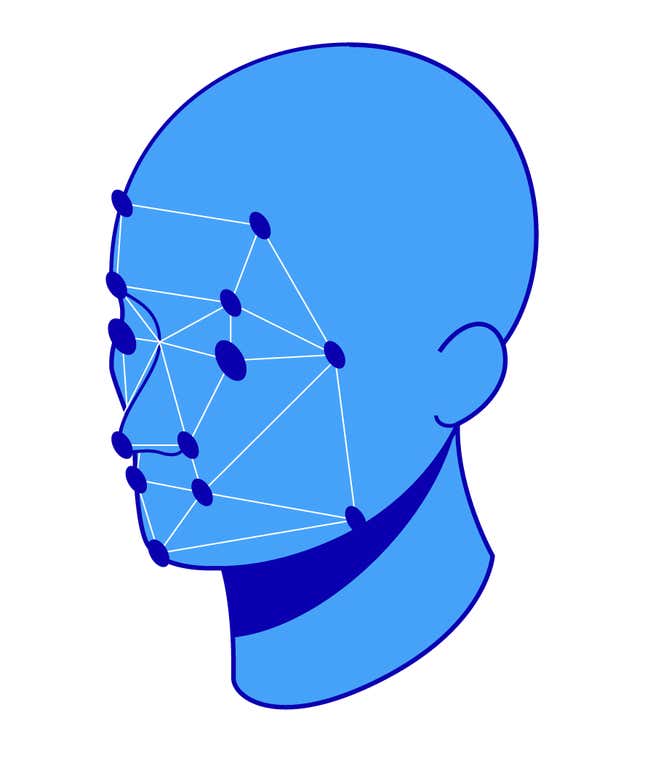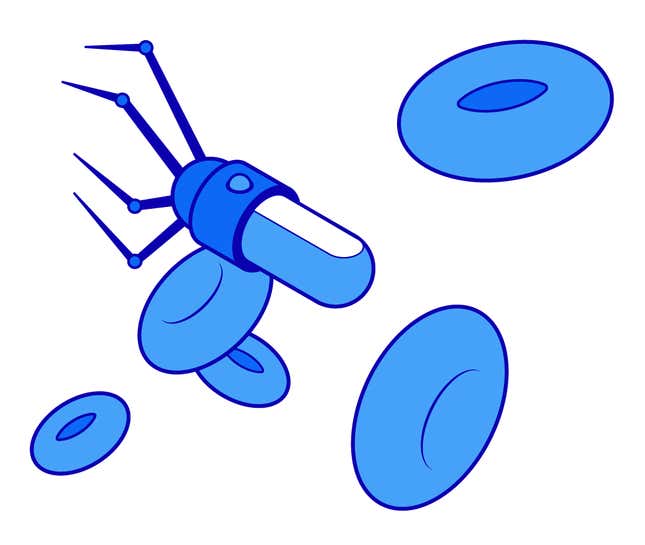The future keeps Dr. Rafael Grossmann up at night. And not in the way an embarrassing moment at work or a joke that fell flat on a date would. It’s more like when you were a kid, and your family had something wildly new and exciting planned the next day, and your brain stayed aglow with possibility. What will things look like, exactly? How will your life change?

That passion still burns brightly in Dr. Grossmann, a surgeon who’s built a sizable side career as a health care futurist, “preaching” (his words) to crowds, writers like me, and anyone who will listen about the benefits of adopting advanced tech in the medical field. This includes things seemingly out of a science fiction novel, like placing nano-robots in our bloodstreams to both diagnose and treat disease.
He’s taken it upon himself to practice what he preaches: In 2013, he became the first surgeon ever to use Google Glass during an operation, live streaming the insertion of a feeding tube to demonstrate the tech’s intraoperative capabilities. This kind of experimentalism, he believes, could eventually lead to improvements across the board in medicine, from the training of practitioners to treatment of patients.
“I love to bring the message out because that’s the best way to bring change and for things to happen,” he tells me over the phone.
But how much change are we talking about here, exactly? And how soon until that change leads to increased lifespans for mankind?
To answer those questions, I asked Dr. Grossmann and another well-known medical futurist, Dr. Bertalan Mesko, about what sort of technology we can expect to encounter down the road in health care, how it could potentially extend our time here on Earth, and some big questions it raises.
Health care, according to both doctors, is shifting away from treatment of diseases and toward prevention. The ability to remove the risk of contracting certain fatal diseases is closer than one might think, but it involves complicated sciences, some of which are controversial, like genetic manipulation.
It works like this: Rather than face a disease like cancer after its diagnosis, genomics — a branch of biology that centers around mapping and editing genomes — could allow doctors to treat a patient based on the DNA compositions of the cancerous cells at the genomic level. In its simplest form (and probably the most realistic to be implemented in the near future), this will culminate in our DNA compositions being put on our medical charts right next to information like our allergies and medications. Both doctors and patients would then be able to watch out for certain symptoms or stressors related to diseases before ever actually making a diagnosis.
But scientists are also working on more proactive approaches, like genetic manipulation and alteration, which would allow us to tweak and modify our genomes to prevent certain pathologies. Obviously, this would extend the lifespans of those who otherwise would die from diseases they’re genetically prone to. But it could also open a can of worms by creating the temptation to alter other genome traits.
“That’s when the thought starts getting a little cloudy,” Dr. Grossmann says. “How much is enough? Should you heal someone? Or should you make someone invincible and superhuman?”
There’s also the matter of access and whether this technology would create more inequality in the world by only being affordable to the ultra wealthy.
“Certainly it’s not going to be a universal gift or blessing for all humans. At least at the very beginning,” Dr. Grossmann says.
The most important milestone in the history of medicine, according to Dr. Mesko, director of the Medical Futurist Institute, is how “patients get empowered in the 21st century.” And how that happens, he says, will be through data and decision making.
“No technological advancements can be compared to the fact that patients now take part in decision making, can take care of themselves properly with data and share the responsibility with their medical professionals,” he explains.
Certain technologies will assist them in this pursuit, though. Perhaps the most significant will be artificial intelligence-based algorithms, which will help both reduce busy work and diagnose and treat illnesses. Surprisingly, the former might be the most revolutionary, as it will make the organization, selection, and curation of medical information much easier, allowing doctors to focus on the big issues.
“I think we’re going to be left with more quality time to sympathetically deal with human beings on a human-to-human level and not having to worry about objective functions,” Dr. Grossmann says.
This is already happening to a degree. If you get a reading at a radiologist office, for example, a certain amount of the data it holds will have been collected by an algorithm. As time passes, machine learning could teach that algorithm to handle more and more of the reading until humans are removed from the process entirely.

Here’s where things get especially sci-fi-ish: Those AI-based algorithms could also be implemented within disease-fighting nanobots. The bots would move throughout our intestines and arteries, looking for potential problems. If they find one, the algorithms would tell them to address it, like, for instance, dissolve plaque in an artery in order to reduce the risk of a stroke. Both Grossmann and Mesko predict this technology will be used on a larger scale in the next 10 to 20 years.
This would most likely lead to extended lifespans, but again it comes with questions of ethics and policies.
“If we need time to trust a driverless car, imagine how much time we will need to trust an algorithm that can help diagnose conditions,” Dr. Mesko says. “To become the point-of-care, I have to use a lot of technologies that exploit my sensitive data. Thus, my privacy is leaking already in exchange for the chance for a longer and healthier life.”
The technologies mentioned above — genetic manipulation, AI-based algorithms, nanotechnology — will all be factors in preventing and curing the most pernicious diseases on Earth. But what will that look like in the future, exactly? Will these diseases actually be extinct?
Probably not, according to Dr. Mesko, but they could be treatable. A good example, he says, is HIV infections and how they’ve become more manageable. With proper care, those who contract them can now expect a similar life expectancy as everyone else. In the future, the same could be said for cancer patients, potentially.
“If we can support this transformation with the right policies and helping patients and physicians understand the context around these changes, then we have a chance for the so-called ‘sustained wellness’,” Dr. Mesko says.
Developing those “right policies” may take some time. The biggest prohibitive to us living in a world where nanobots are in our bloodstream and the ugly traits of our genomes are being plucked out are public reluctance and policy. For the most part, the technology is already here, and it holds great potential. If tapped, it would signal the dawn of a new age — literally.
Reed Jackson is a Writer for Studio@Gizmodo

